Summer Reading Challenge: How Sweet It Is!
 You know the anticipation a six-year feels while she waits for Christmas? Well, that’s how I feel waiting every year for the announcement by Raquel over at Out of the Past about her annual Summer Reading Classic Film Book Challenge. That’s the one where you commit to reading six classic film-related books during the summer, and writing a review about each one. It’s great fun, and a perfect chance for me to check out some of these classic film books that I love to accumulate, but never seem to get around to actually reading!
You know the anticipation a six-year feels while she waits for Christmas? Well, that’s how I feel waiting every year for the announcement by Raquel over at Out of the Past about her annual Summer Reading Classic Film Book Challenge. That’s the one where you commit to reading six classic film-related books during the summer, and writing a review about each one. It’s great fun, and a perfect chance for me to check out some of these classic film books that I love to accumulate, but never seem to get around to actually reading!
This is my fourth straight year participating in the challenge – last year, I literally read around-the-clock for two days to finish four books in order to meet the deadline. It was probably one of the nuttiest things I’ve ever done. (Not that I wasn’t proud of my accomplishment, but that didn’t make it any less nutty!) Because of that extreme experience, though, I was determined that I wasn’t going to have a repeat performance this year. I carried one of my books with me at all times, all summer long, whipping it out whenever I had a free minute – waiting in line at the post office, sitting in the drive-thru line at the bank, even while I was cooking dinner (but only once with that last one, as it resulted in some rather overdone pork chops). My determination paid off in spades – I not only finished the challenge a week before the deadline, but I actually lost track, and finished seven books instead of six! (Can I get a woot woot?)
So it’s with much pleasure that I share with you my books for the Summer Classic Film Book Challenge for 2016. And, I might add, this year’s crop was the best yet!
 Strangers May Kiss by Ursula Parrott
Strangers May Kiss by Ursula Parrott
In last year’s challenge, I read Ex-Wife by Ursula Parrott, the book on which one of my favorite pre-Codes, The Divorcee (1931), was (loosely) based. I absolutely fell in love with Parrott’s writing, so I was thrilled to receive for my birthday last year a copy of another one of her books, Strangers May Kiss (1931). Like Ex-Wife, Strangers May Kiss was made into a pre-Code feature starring Norma Shearer, and also like Ex-Wife, I loved, loved, loved Strangers May Kiss.
Divided into four parts – Parade, Tomorrow, Today, and Yesterday – Strangers May Kiss focuses on a beautiful young woman named Lisbeth, and her endlessly endless love for Alan, a newspaper correspondent for the Chicago Tribune. Lisbeth and Alan first meet when she is a 17-year-old freshman at Wellesley College and he is in his early 30s. Lisbeth is immediately taken with the handsome and dashing reporter, and has no inkling that he’s a bit of a cad: not only is he married (estranged, but married nonetheless), but he hops from one affair to another like the bunny rabbit in Mr. McGregor’s garden. (Or something like that. You get the idea.)
The book depicts 10 years in Lisbeth’s life, beginning with her first date with Alan, during which she has her first martini, her first kiss, and her third cigarette. From that day forward, her heart belongs to Alan, and only Alan, despite the fact that during the next decade, she literally spends fewer than 45 total days with him. We’re with her when she has her second date with Alan (three years after the first), and sleeps with him. And three years later when he returns from China. And a month later when he leaves again, this time for Africa. All the while, her love for him grows and grows. But Alan? Not so much. At one point in their relationship, he actually tells her, “When a woman decides a man is her career for life, she fastens to him and thereafter he is like a horse carrying extra weight.”

The character played in the film by Irene Rich (center) wasn’t in the book at all.
Ursula Parrott does a masterful job taking us inside Lisbeth’s mind and heart, helping us to understand her feelings and actions, even as we want to slap some sense into her and give her a good shake. Lisbeth eventually realizes that Alan just considers her to be “an episode,” but this merely makes here just that much more determined to “make him care as I care – to make him feel that he doesn’t want to let me be just an episode.” It’s heartbreaking and incredibly moving, especially if you’ve ever loved someone more than they loved you, or longed for a commitment that you didn’t get.
Although the 1931 big screen vehicle shares the name with Parrott’s book, there are only a few similarities between the two. In both, Alan is a newspaper correspondent who enters and exits (mostly exits) Lisbeth’s life, and in both, the couple take an extended vacation – Bermuda in the book, Mexico in the film. Also in both, Lisbeth desperately wants Alan to take her with him on his next venture – and he refuses. The book, though, contains several characters that are missing from the film, including Lisbeth’s close girlfriend, Geneva, and Stephen, an alcoholic newspaper reporter who loves Lisbeth as much as she loves Alan. And the primary difference between the two films comes at the end – the film version ends happily, with Lisbeth and Alan walking off together in the proverbial sunset, but the book… well, I certainly don’t want to give it away, but let me say that it was a stunner and it left me with quite the soggy hanky.
I can’t recommend this book enough. There’s just something about Ursula Parrott’s writing that speaks to me. Loudly.
 Leave Her to Heaven by Ben Ames Williams
Leave Her to Heaven by Ben Ames Williams
I have wanted to read this book for years. Then, this summer, while on my annual road trip to The World’s Longest Yard Sale, I saw a hardback copy of it on a table in Celina, Ohio. For a quarter, y’all. Dust jacket and all! I almost felt guilty buying it – what a find!
The book was everything I wanted it to be. (If you’ve never seen the movie, you might want to skip ahead to the next review – I’m going to get a little spoilerific.) Like the film of the same name, it tells the tale of Ellen Berent, a beautiful sociopath whose penchant for all-encompassing love leads to deception, betrayal, and murder. In fact, the book very closely mirrors the film – it’s told as a flashback, and takes us through the meeting of Ellen and novelist Richard Harland on a train, the whirlwind relationship that results in their marriage, and the steps she takes to ensure that no one comes between her and her man – not Richard’s crippled younger brother, Danny, or even their own unborn child.
Williams has an engaging writing style and the ability to create imagery and detailed character studies without becoming tedious. Through his words, we fall in love with Ellen’s sweet-natured adopted sister, Ruth; feel revulsion for Ellen’s ex-fiance Russell Quinton; appreciate the stinging candor of Ellen and Ruth’s long-suffering mother; and experience ongoing horror at Ellen’s behavior.

Ellen Berent was just as scary in the book as she was on screen.
There were only a few major differences between the book and the movie – in both, Ellen takes Richard’s brother on a swim in the lake, allowing him to drown when he suffers a cramp. Film Richard didn’t know his wife’s culpability until much later in the couple’s marriage, but in the book, he knew right away that Ellen was responsible for Danny’s death. Also, in the book, Richard and Ruth fell in love and married a few years after Ellen’s death, and just before Ruth was accused of murdering her sister. In the film, it was only while on the witness stand for Ellen’s murder that Ruth admitted that she loved Richard. Overall, though, this is one of the most outstanding adaptations of a book that I’ve come across. If you get your hands on this book, I highly recommend that you snatch it up. Even if it costs more than a quarter.
Star-Crossed: The Story of Jennifer Jones and Robert Walker by Beverly Linet
Actor Robert Walker met and fell in love with Jennifer Jones when her name was still Phylis Isley, and the two were studying at New York’s American Academy of Dramatic Arts. The couple had two children, Robert Walker, Jr., and Michael. It was quite a lovely fairytale story – until producer David O. Selznick entered the picture. And then, all bets were off.
 Star-Crossed is a kind of triple biography, giving us the story of Walker and Jones separately, and then their relationship together, from its meet-cute beginning to its unhappy end – and on through to Jones’s marriage to Selznick. It’s a really interesting read, and I learned all sorts of details about the three principal characters that I never knew. I discovered, for instance, that Walker was willful and unpredictable as a boy, with a hair-trigger temper and a lack of impulse control that frequently got him into trouble. And that Jennifer Jones, the well-behaved only child of tent show owners, wanted to be an actress from the time she was six years old, when she announced her future plans to her parents. And that Selznick was full of ambition, drive, and “an obsessiveness that drove everyone with whom he worked to distraction.” (On second thought, I guess I kinda knew that last one already.)
Star-Crossed is a kind of triple biography, giving us the story of Walker and Jones separately, and then their relationship together, from its meet-cute beginning to its unhappy end – and on through to Jones’s marriage to Selznick. It’s a really interesting read, and I learned all sorts of details about the three principal characters that I never knew. I discovered, for instance, that Walker was willful and unpredictable as a boy, with a hair-trigger temper and a lack of impulse control that frequently got him into trouble. And that Jennifer Jones, the well-behaved only child of tent show owners, wanted to be an actress from the time she was six years old, when she announced her future plans to her parents. And that Selznick was full of ambition, drive, and “an obsessiveness that drove everyone with whom he worked to distraction.” (On second thought, I guess I kinda knew that last one already.)
If you don’t know the story, Walker and Jones were married for six years, but their union started to unravel when they moved to California and David O. Selznick signed Jennifer Jones to a personal contract. Less than two years later, Jones left Walker, an act that devastated the sensitive actor and led to a reliance on alcohol that would last for the rest of his life. In 1949, six months after Selznick’s divorce to his wife was finalized, he and Jennifer Jones were married. And two years later, shortly after the release of his Oscar-worthy performance in Strangers on a Train (1951), Robert Walker would be dead, following an adverse reaction to a doctor-administered dose of sodium amytal.

Walker and Jones. The salad days.
After her marriage to Selznick, Jones’s life was certainly no bed of roses. Professionally, her highly anticipated Broadway debut was a flop, and she was panned in such Selznick productions as the remake of A Farewell to Arms (1957). And she fared even worse in her personal life. She reportedly attempted suicide on more than one occasion, and, saddest of all, her daughter with Selznick, Mary Jennifer, killed herself at the age of 21.
I have to admit, though, while the book is certainly written in an objective manner, I couldn’t help coming away with a strong sense of sympathy for Robert Walker and a rather bad taste in my mouth toward both Jennifer Jones and David O. Selznick. It’s just such a sad story – and I can’t help but wonder what would have happened if Selznick had never entered the picture.
Scarlett O’Hara’s Younger Sister: My Lively Life In And Out Of Hollywood by Evelyn Keyes
One of the most fun things about this reading challenge – other than the actual reading, of course – is choosing the books that I’m going to read. About three weeks after this year’s challenge started, though, I still hadn’t picked all of my books. Then, as fate would have it, one day I happened to see a post on Facebook that referred to Evelyn Keyes’ autobiography, Scarlett O’Hara’s Younger Sister. I don’t remember exactly what the poster said, but I do recall that he described it as “raunchy.” And that’s all I needed to know. I’ve had this book in my collection for years and years – I had to find out what this guy was talking about!
 And let me just say I wasn’t disappointed. Here’re a few examples of the book’s titillating tidbits:
And let me just say I wasn’t disappointed. Here’re a few examples of the book’s titillating tidbits:
Keyes shared that she engaged in a one-night stand with a “very tall actor” after catching her husband making out with a starlet. (“I don’t even like actors very much,” she admitted. “But once in a while they have come in handy.”)
The actress also admitted that she was disappointed in her affair with Anthony Quinn. “There was simply too much of Tony (yes, there too).”
And she offered this self-observation: “I was pretty enough little thing; my breasts, unfortunately were only average. America – and movie producers – preferred those blown-up jobs.” Further introspection led the actress to share that she once thought she was “the world’s lousiest lay.”
And I couldn’t leave out the description of her sexual awakening, thanks to an affair with her soon-to-be second husband, Hungarian director Charles Vidor. One of Keyes’s accounts actually includes the following: “Oh please…” I was excited. “I…you…you…” I knew I should stop him. I didn’t seem to be able to…I don’t know how it happened. He was suddenly on his knees before me, his mouth on the inisde of my knee. It was climbing…
Yikes.

Keyes and Hubby Number 3.
But the book wasn’t all sexual shockers. We learn that her first husband committed suicide, and that her subsequent marriages – to Vidor, actor/director John Huston, and big band leader Artie Shaw – all ended disastrously. And she didn’t fare any better with her longtime relationship with larger-than-life producer Mike Todd, who eventually left her for Elizabeth Taylor. Keyes also gave us the inside scoop about her brush with the House Un-American Activities Committee (HUAC), where she joined her then-husband Huston and such luminaries as Humphrey Bogart, Lauren Bacall, Kirk Douglas, and Myrna Loy in standing up against HUAC’s Communist witch hunt. Her stance caused the Committee to shine the spotlight her way – and she was once even forced to sign a Loyalty Oath in order to secure her passport.
Aside from her openness about her sex-capades (and her colorfully descriptive language), Keyes was incredibly candid about other areas of her life, including her penchant for remaining in toxic relationships with men. She also didn’t shy away from admitting that she was a reformed racist. Keyes’s first reference to the way she felt about blacks came during her discussion of Gone With the Wind (1939) – she remarked on the fact that the film’s black performers were portraying slaves, saying it “kept them in their place.” And later, describing an event where black dancer/choreographer Katherine Dunham was a guest, Keyes recalled telling her then-husband Charles Vidor, “I can’t stay here in the same room with a nigra…!” After being vehemently chastised by her spouse, Keyes began the journey toward shedding her lifelong prejudices, but I found her raw honesty to be really rather refreshing. (Incidentally, she divulges that years later, she had a fling with a popular, but unnamed, black performer – a fact that her one-time boyfriend Mike Todd was never able to accept.)
I can’t say that I’ve ever read a book quite like this one before. I’ll tell you one thing – I’ll certainly never look at Suellen O’Hara the same again.
 Virginia Bruce: Under My Skin by Scott O’Brien
Virginia Bruce: Under My Skin by Scott O’Brien
I’ve only seen Virginia Bruce in one movie – Downstairs (1932) – but her standout performance in this first-rate pre-Code was enough for me to look forward to digging in to this biography that I received last year for Christmas. Written in 2008, the book’s subtitle was taken from the Cole Porter song that she warbled to James Stewart in MGM’s Born to Dance (1936).
An accomplished pianist, Bruce wanted to study music at the University of California, but she wound up in the movies after a chance meeting with a Hollywood director. Before long, she was appearing in small roles in films starring such luminaries as Adolphe Menjou and Jeanette MacDonald. Professionally, Bruce never wanted for work, but she was never very ambitious and her career always seemed be just on the brink of stardom – always a bridesmaid, never a bride.
Off-screen, Bruce was probably best known as the fourth – and last – wife of actor John Gilbert, her co-star in Downstairs. Nine days after she first met Gilbert at the home of Downstairs director Monta Bell, Gilbert proposed, but a couple of years later, just months after the birth of their daughter, Susan Ann, the marriage was over. “Love tricks you into a false sense of security,” Bruce said later. “Maybe the old fairy tales are to blame.” Bruce seemed to find real happiness with her second husband and father of her son, screenwriter J. Walter Ruben but, tragically, just five years after they married, Ruben died. And Bruce’s third (and fourth!) marriage, to Turkish film producer Ali Ipar, was full of more ups and downs than a roller coaster, not least of which was Ipar’s imprisonment in a Turkish jail after a bad business deal.

Virginia Bruce in Kongo. I gotta get my mitts on this film.
One of my favorite anecdotes about the actress came from her high school days. Not one of the school’s better students, Bruce earned a perfect score on a paper one day and was praised by her teacher, who asked how she’d gotten such a high mark. The future actress replied, “I copied Hamilton Simon’s paper.” And when the teacher said that she’d have to be given a zero instead, Bruce said that she’d expected that: “I just wanted to see what a hundred on my paper would look like.” Bruce’s unerring honesty and habit of speaking without thinking was a trait that would crop up again and again.
In a few other reviews I’ve read about this book, writers complained that O’Brien put too much emphasis on Bruce’s professional life and not enough on her life off-screen; for instance, little was written about her relationship with her children or her eight grandchildren. I, too, would have liked more information about her offspring, but I thought that the amount of information about Bruce’s life behind the scenes was more than satisfactory. Plus, the details about her films certainly piqued my interest – I’m especially eager to track down Kongo (1932) and The Invisible Woman (1940).
(One more thing that I have to mention – the book was fairly overflowing with errors, from misspelling Una Merkel’s name, to using the word “where” instead of “were,” to referencing “Howard K. Stern” instead of “Alfred K. Stern.” It was a little distracting. This was still a good read, though.)

Ricardo Cortez: Magnificent Heel
The Magnificent Heel: The Life and Times of Ricardo Cortez by Dan Van Neste
Full disclosure – this soon-to-be-published book came across my desk because the author asked me to read it over. He’s a pal of mine, but don’t think that will stop me from giving you the straight dope on what I thought of the book.
And what I thought was that it was one of the most interesting biographies I’ve ever come across.
On a side note, I lucked out with this summer’s crop of biographies. I have to say that most movie bios are pretty much unreadable for me – either there’s too much research and not enough juicy stuff, or the writing is flat and kinda boring, or there are too many details about the star’s personal life and not enough about their films (or vice versa). I didn’t encounter those problems with any of the bios I read for this year’s challenge, including this one.

Did you know that Cortez was the only actor to receive top billing over Greta Garbo? He was!
I was really excited to read this book, because Ricardo Cortez is one of my favorite pre-Code performers. And just like with Virginia Bruce, I didn’t know one single thing about his personal life before I read this book. Driven by captivatingly titled chapters (like “The Latin from Manhattan” and “Professional Scoundrel”), the book takes us through Cortez’s beginnings as Jacob Krantz, born on Hester Street in Manhattan’s Lower East Side; his teen years, when he held down such varied jobs as newspaper copyboy, theater doorman and taxi dancer; and on through his path to the stage and then films, where he was originally groomed as the next Rudolph Valentino.
I was fascinated to read about Cortez’s relationship with silent screen actress Alma Rubens, who he married in 1926 (not knowing that she was a narcotics addict), and who died five years later, at the age of 33. Equally interesting were his struggles to overcome a spate of unfounded rumors that cropped up about him and threatened to end his early career. In addition to Cortez’s life off screen, there’s a great deal about his professional work, and while Van Neste doesn’t sugarcoat the less favorable aspects about Cortez’s personality, overall, I came away with a positive feeling toward this hard-working performer and a desire to seek out even more of his films.

Cortez turns on the charm in Mandalay, one of my favorite pre-Codes!
The book is divided into two parts – the first part covers Cortez’s life and career, and the second part focuses on his films, providing a cornucopia of information, including casts, taglines, plot summaries, reviews, and – my favorite – trivia! I’m telling you, this section is like a whole ‘nother book, chock-full of all kinds of goodies. I learned, for instance, that in during a fight scene in one of his films, Children of Jazz (1923), Cortez knocked co-star Theodore Kosloff unconscious. According to news reports, Kosloff required “much sponging to free himself of gore.” (Har! And, also, ew.)
I highly recommend that you grab a copy of this one when it’s released by Bear Manor Media early next year. You’ll be glad you did.
And that’s it! Another summer, another challenge under my belt. Can’t wait ’til next year!



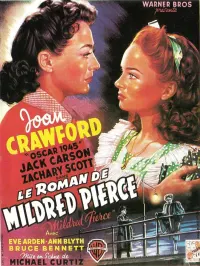




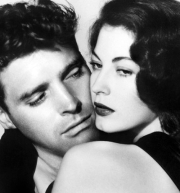













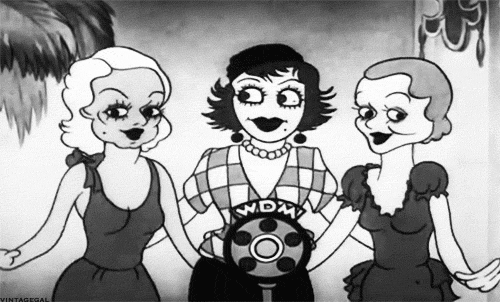


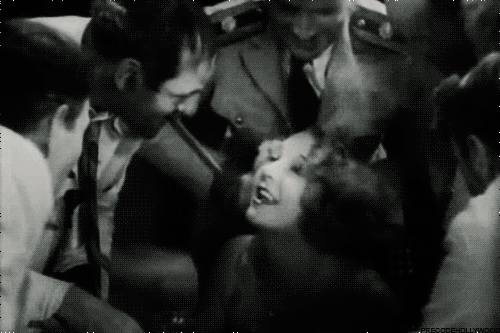


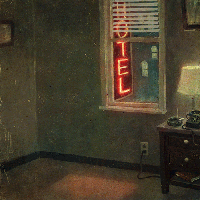
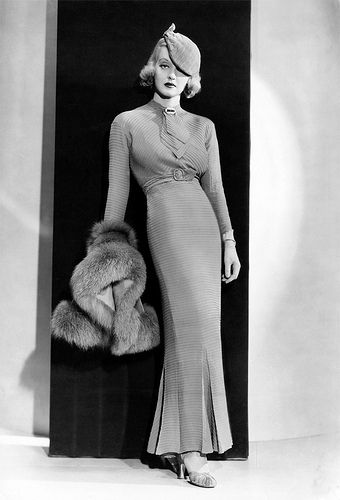



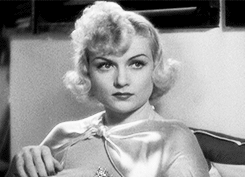
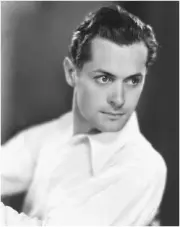
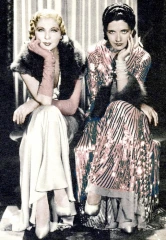

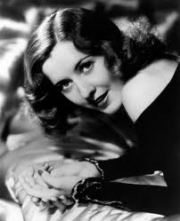



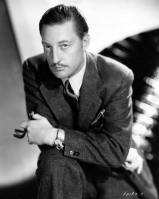




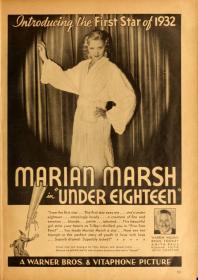
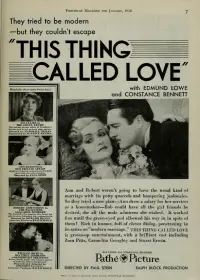

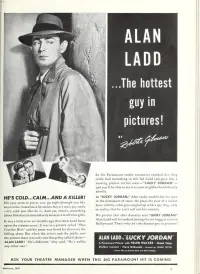
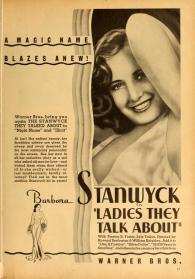

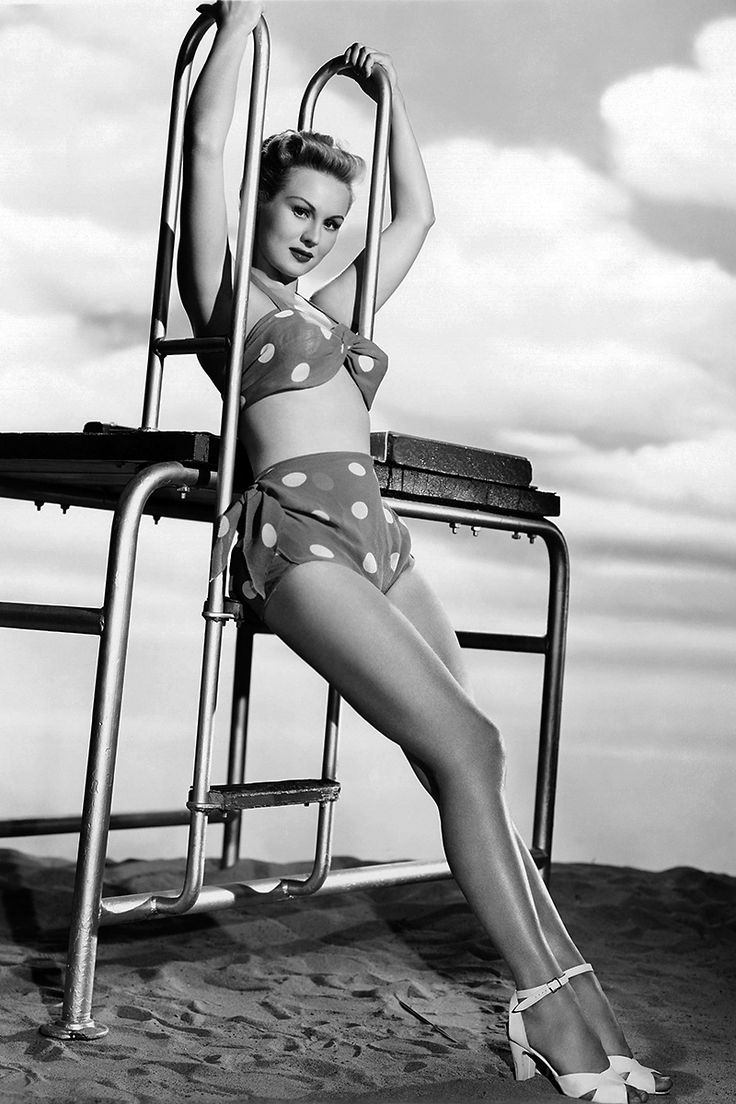




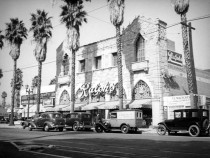


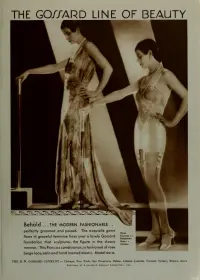

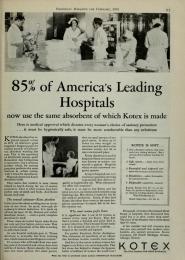

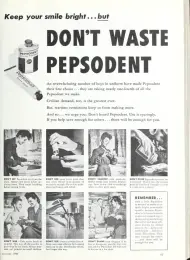


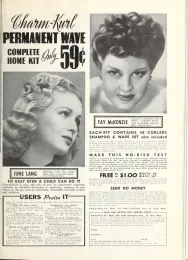


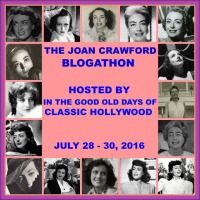


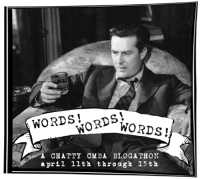

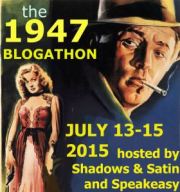
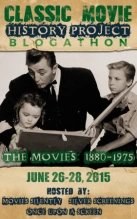
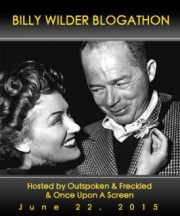


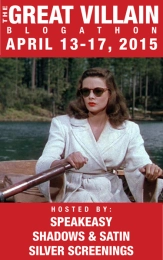


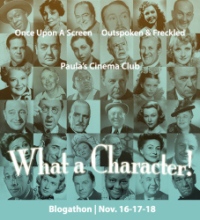
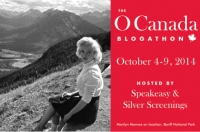


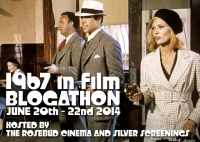


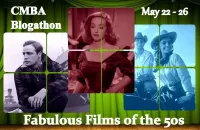
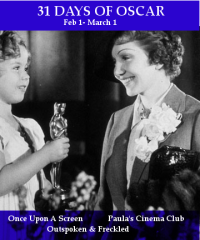
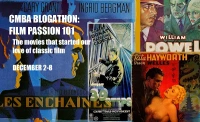







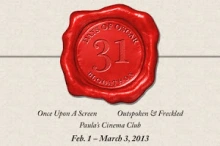

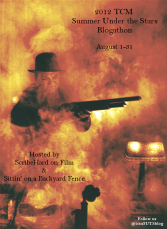


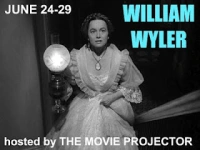





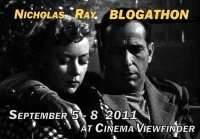

Karen, you’ve sold me on each one of these books. Kudos to you for reading seven, instead of six, and finishing a week early! You are amazing.
Also, I can’t believe you found a copy of Leave Her to Heaven for 25 cents. Good job!
Thanks so much, Ruth — you are a sweetheart. 🙂
KONGO on dvd is available from Warner Archives. Hang on to your socks with this movie. Not up to the same tale depicted in the silent shocker, WEST OF ZANZIBAR, with Lon Chaney & Lionel Barrymore it will still stay in dark closet of your mind for the rest of your life with its myriad of pre-code nastiness. Walter Huston, Lupe Velez and Conrad Nagel join Virginia Bruce in giving us an unforgettable nightmare of grotesque and despicable events. You have been warned.
Hi, Max — I remember seeing part of Kongo last year during Virginia Bruce day for TCM’s Summer Under the Stars, and it definitely didn’t look very appealing, that’s for sure. I’m going to screw my courage to the sticking place, though, and try to give it a try. But I think I’ll only try watching it in the daytime. Thanks for the warning! 😉
I’m so proud of you Karen! Your dedication to this summer reading challenge really motivates me. I appreciate your participation every year and you always impress me by the quality of books you read. You find some real gems!
I’m so glad that Leave Her to Heaven met your expectations. I need to give that one a try. It’s on my wishlist. And wow 25 cents is an absolute steal. I’m not sure if I could read that Jones-Walker book. Their story always makes me really sad, especially because of how it affected Walker. Books about relationships are rare but they are interesting finds. I read one once on Hepburn-Tracy’s romance.
That Evelyn Keyes book sounds uhh interesting. WOW. Quite a lot there to take in. I’ve had my eye on that Virginia Bruce book. I love her. I saw her in Kongo (1932) and yes you do have to get your mitts on it. Her performance in that is wonderful.
Like you I carried a book everywhere with me. I even finished my last review while in the hospital. I mostly use my TCMFF tote bag from 2014 which is the perfect fit for almost any size book and I keep a pen and notebook handy. I’m constantly taking down notes and transcribing quotes that I want to use for my reviews. Having a book by my side constantly makes it much easier to get all that reading done.
Congrats on reading 7 books wow! and thanks for the wonderful reviews.
Thanks so much, Raquel, for another great challenge! I’m so glad you thought of this idea. I’m certain that I would never have read most of the books that I’ve read during the last four summers, if not for your challenge. Next year, I will have to take a page out of your book (so to speak) and take a lot more notes while I’m reading. I only took a few, here and there, not thinking about the fact that for some of the books, a few months would go by between the time I read them and the time I wrote about them! Thanks again! 🙂
I always enjoy what your share and appreciate how much you love the classic films and their stars! We have a thread on Amazon which we have dubbed the “Talk of the Tome.” There we challenge ourselves to read those classics by Dickens, Hardy and Dostoevsky, etc., that we all own but have never read. But your summer reading program of behind the scenes Hollywood, would be really refreshing. We did try and read Chandler’s “The Big Sleep” but we had trouble getting it through it. I forget why.
Thanks for all the thoughtful and interesting pieces you put on this website. By the way, I mentioned you on another Amazon thread about classic movies and a fellow named Grant says he knows you! Small world..or is it that the pictures got small! (Norma Desmond)
Thank you so much for your kind words, Kimberly! I love the name ‘Talk of the Tome’! And what a great idea — in addition to collecting classic film books, I also have my share of classics — Anna Karenina, Wings of the Dove, Nicholas Nickleby, the complete novels of Jane Austen — all waiting to be read. Tell Grant I said helloooo! 🙂
Join us on the Tome sometime.
https://www.amazon.com/forum/classic%20movie/ref=cm_cd_pg_oldest?_encoding=UTF8&authToken=&cdForum=FxIDK5F2EX3N30&cdPage=1&cdSort=newest&cdThread=Tx27BRDXTNDLK06
I told Grant you said ‘hey’.
I would love to! Thanks, Kimberly!